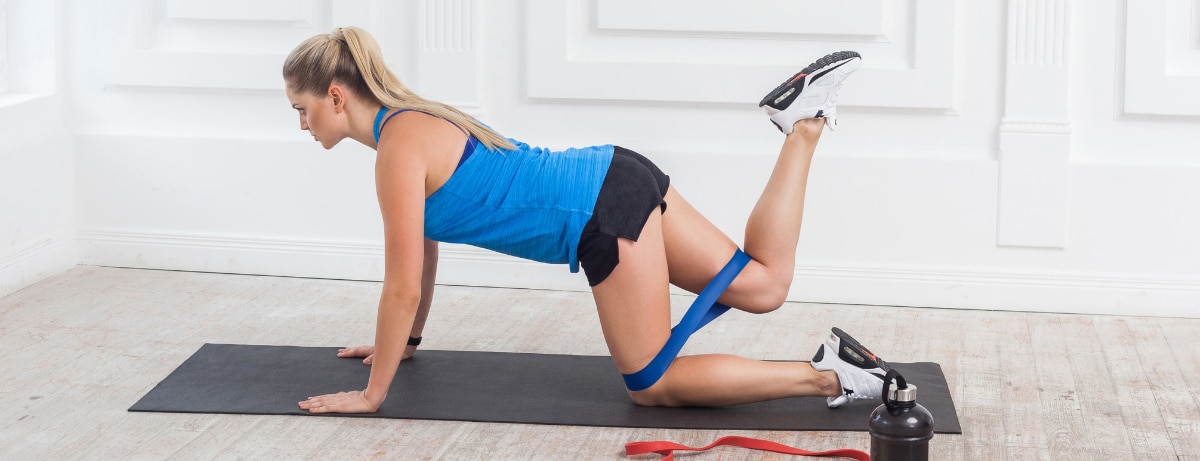15% off £35 OR 20% off £45
Code:FAVES
Getting back into exercise after injury

Recovering from an injury and want to get back exercising? We can help. Discover advice on all things exercising after recovery in this article. Learn more here.
Summary
1The most common types of injuries after exercise
Looking at gym-based injuries in particular, The Compensation Experts did a survey on 1,000 gym users to find out some of the most common types of...
2Introducing exercise after an injury
Ready to try and start exercising again after an injury? Fiona Sweny highlights that recovering from an injury is very different for everyone and...
3How to prevent of injury after exercise
Rehabilitating from injury is essential and returning to exercise before you have healed is likely to lead to you being injured again...
While feeling a bit stiff after working out can feel uncomfortable, this is generally not considered an injury – more often than not it is just the sign of a good workout! But if you have been injured and you’re going through recovery with a view to get back into exercise, you’re in the right place.
With the help of our Digital Health Lead and qualified physiotherapist Fiona Sweny, we’ll cover everything from the most common types of injuries you can get from exercising, to preventing injuries after exercise in the future.
How common is an injury after exercise?
Regardless of your fitness level, exercise-related injuries can happen to anyone. But how common are they?
While it is impossible to give an exact figure, a key insight comes from the US National Safety Council, who stated that the number of exercise and exercise equipment injuries increased slightly in 2021 (409,224 injuries in 2021 compared to 377,939 in 2020).1

What are the most common types of injuries after exercise?
Looking at gym-based injuries in particular, The Compensation Experts did a survey on 1,000 gym users to find out some of the most common types of injuries that can take place. The results showed that the most common injury from using the gym are knee injuries, with shoulder injuries next on the list.2
From most to least common, here are the body parts that get injured the most at the gym according to their survey:2
It goes without saying that you can injure yourself in lots of other ways too, like when biking or playing football – not just in the gym!
Introducing exercise to your routine after an injury
Ready to try and start exercising again after an injury? Our Digital Health Lead Fiona Sweny highlights that recovering from an injury is very different for everyone and is dependent on many factors, such as type of injury, age and activity levels that you are trying to return to.
For example, a stress fracture in your foot will require a different return to exercise protocol than a traumatic fracture, and it is best to do it under the supervision of someone who is experienced in injury management.
Once you’ve been given the all clear, then you can return to exercise using a gradual approach to allow your body to adapt to the increase in training load.
How much exercise should you be doing after you’ve recovered from an injury?
The expert opinion is that the level of exercise you should be doing is dependent on how long you have been injured for and what your level of activity and fitness level were like previously. The key is to progress it sensibly.

Couch to 5K, which is the NHS’s running protocol, is excellent for someone getting back into running who may have been out for a while. Remember, regression is normal.
Returning to fitness after injury is rarely linear, so be attentive to signals in your body that tell you you’re doing too much. Generally speaking, muscle soreness that passes is fine, but pain is not.
How to prevent of injury after exercise
So, what can you do to reduce the chance of getting injured again in the future? Fiona Sweny MSc points out that rehabilitating from injury is essential and returning to exercise before you have healed is likely to lead to you being injured again.
It is very important to build strength and flexibility as you return to physical activity after an injury. Focusing on recovery, sleep, nutrition and a balanced training plan are all helpful to reduce chances of injury.

Alternative exercises
Your health care professional will advise you what you can or can’t do, but a rule of thumb is that you can generally do something rather than nothing. This might take some creativity dependent upon your injury.
Whether that is working your core, focusing on upper body strength, using a bike, or going swimming instead of running, keeping as active as you can is still important, but ensure that you follow your rehabilitation guidelines and don’t take any unnecessary risks.
Tips for exercising after recovery
To help you along the way, our Digital Health Lead Fiona Sweny has provided some extra tips on exercising again after injury:
- When rehabilitating from an injury it is not a case of ‘no pain no gain’. Be aware of your symptoms.
- Healing times are dependent on the severity of the injury and also the type of tissue you injure (e.g. bone vs muscle vs tendon).
- Both smoking and alcohol are consumption are detrimental to tissue healing
- A balanced diet is key, and there is some limited evidence for eating foods that have anti-inflammatory properties.
The final say
Getting back into exercise after an injury can be difficult, but with the right approach and advice it is certainly achievable! For a little extra support, you might want to consider taking some supplements or vitamins for bones, joints and muscles to help as you build up your exercise routine again. And of course if you have any concerns about your symptoms, do speak to a medical professional for advice that is tailored to your exact worries.
Related Articles
Shop by wellness goal
Sign up for exclusive offers
Plus, get expert advice to support your health & wellness straight to your inbox when you sign up to Holland & Barrett emails.
Read our
privacy policy













